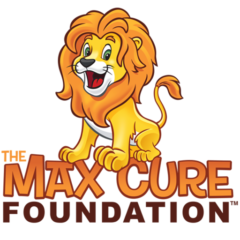
Compassionate Use – There is no Winner
March 5, 2015
Stop This Act of Terror!
March 5, 2015I recently introduced my friend Tom, who fought in Vietnam in the late 1960’s, as a former Marine. Tom immediately interrupted me and said, “I am not a former Marine, I am a Marine – there are no former Marines.” I thought of that exchange with Tom as I recently viewed a video of a question and answer dialogue with Dr. Lisa Diller, Chief Medical Officer, Dana-Farber/Boston Children’s Cancer and Blood Disorder Center.
The subject of the video is the issues that face childhood cancer survivors (those that survive five years from diagnosis). Of the 15,780 children in this country diagnosed with cancer each year, 17% or 2,683 are expected to die from the disease within five years of diagnoses, leaving 13,097 who are called, “survivors”. One leader with the National Cancer Institute (NCI) recently testified at a hearing in Washington, D.C., when questioned as to the lack of funding for pediatric cancer research, “With an 80% survival rate, we must be doing something right.” Being the grandfather of an 11-year old child diagnosed with cancer at age 4, who had undergone over two years of toxic chemotherapy treatments and countless other procedures, I have learned as I did from my friend Tom as to his “always being a Marine”, that there are no former childhood cancer patients. Every child with cancer faces an unknown future, which promises to place an untold number of obstacles in his or her path.
Another grandparent of a pediatric cancer survivor, Joe Baber, and I, on behalf of the Coalition Against Childhood Cancer (CAC2), (Joe and I, with two other grandparents, formed Grandparents In Action for grandparents directly affected by cancer in their grandchildren) recently published statistics regarding childhood cancers. Those statistics, which can be found on the CAC2 website, include the following relative to childhood cancer survivors:
- 35% of those children (under the age of 20) diagnosed with cancer will die within 30 years from diagnosis;
- The average age of a child diagnosed with cancer is 6-years old;
- Of those children diagnosed with cancer in this country, 17% will die within 5 years, with an additional 18% (considered “survivors”) dying within the following 25 years;
- Childhood cancer survivors have an 8 times greater mortality rate than other children given the increased risk for heart and liver disease as well as the increased risk for reoccurrence of the initial cancer or of other cancers;
- 98% of childhood cancer survivors will suffer health related side effects during their lives as a result of the toxic treatments given to them following their diagnosis and of the cancers themselves; and
- Of the 98%, one-third of the side-effects will be classified as severe and chronic; one-third as moderate to severe; and one-third as slight to moderate.
 For those children who are fortunate enough to be classified as “survivors”, they and their families must always remember, paraphrasing my friend Tom, “There are no children cured of cancer and their side-effects.” All those that survive the 5 years from diagnosis must be mindful of the potential risks that lay ahead. A good place to start is to view the video referenced above and to not lose contact with the treating physicians and hospitals who successfully navigated the five year period from diagnosis.
For those children who are fortunate enough to be classified as “survivors”, they and their families must always remember, paraphrasing my friend Tom, “There are no children cured of cancer and their side-effects.” All those that survive the 5 years from diagnosis must be mindful of the potential risks that lay ahead. A good place to start is to view the video referenced above and to not lose contact with the treating physicians and hospitals who successfully navigated the five year period from diagnosis.
Author: Richard Plotkin, Vice-Chairman of The Max Cure Foundation

